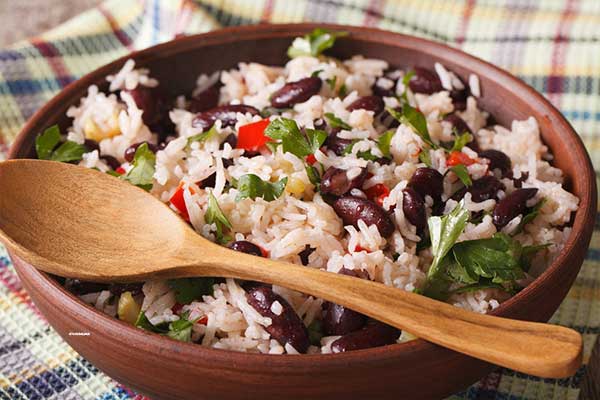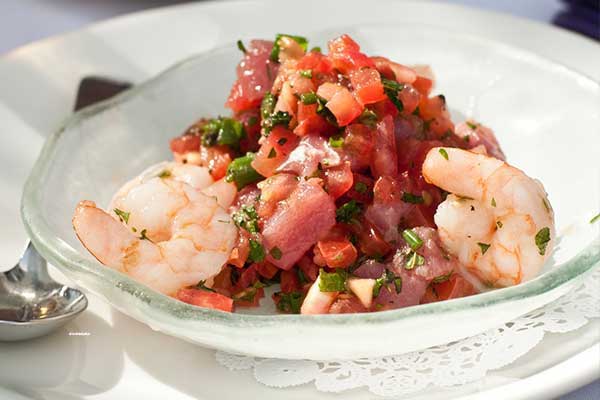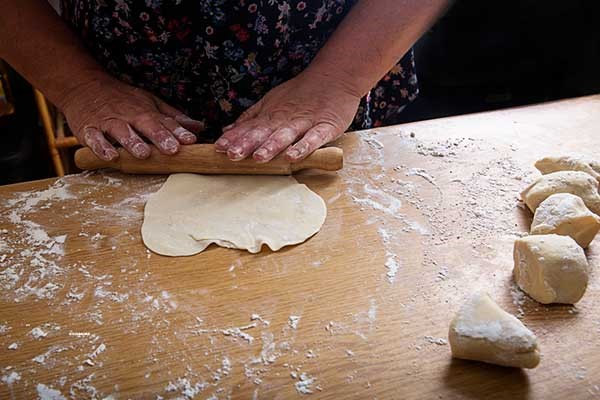In a country advertised as the place to see sloths, go ziplining, and surfing—cuisine is typically overlooked when considering Costa Rica as a destination. Sure, this magically diverse country is known for its world-class coffee, yet many people cannot even recall a dish for which Costa Rica is famous.
While international gastronomy tours are taking off as a reason for travel, cuisine in Costa Rica is evolving and fusing new flavors with traditional dishes.
Costa Rica is rich in locally grown fruits and vegetables so long-haul transportation is rarely necessary. For seafood lovers, Costa Rica has a perfect trifecta of seafood from the Pacific Ocean, the Caribbean Sea, and the many rivers and streams which provide fresh-water fish. The Guanacaste province in the northwest is one of the largest grass-fed cattle producing regions outside of Argentina. All of this means there is enough food locally produced to satisfy just about any palate.
Here are a few of the perennial favorites along with a few twists….
Gallo Pinto

Gallo Pimto means “spotted rooster” because of its colors. It is typically eaten as a breakfast dish made of rice and beans mixed together with small pieces of red and green bell pepper (chili dulce), cilantro, and onion giving it just a little spice. When the beans and rice are blended together with all the ingredients, it creates a spotted coloring, thus giving it the name gallo pinto. You will find this on every Costa Rican breakfast menu often served along with a side of fried sweet plantains, a couple over-easy or scrambled eggs, fresh juice, and a cup of perfect Costa Rican coffee, a great way to start every morning.
Chifrijo
Chifrijo has taken Costa Rica by storm over the last few decades as a popular snack—originating in suburban San Jose. The name is a combination of chicharron (fried pork rinds) and frijoles (beans)—its two main ingredients. Chifrijo also includes rice, pico de gallo (tomato, onion, cilantro), and add-ons such as avocado or jalapeños.
Ceviche

Ceviche is a seafood dish usually served as an appetizer or snack, popularized centuries ago during the colonial times in present-day Peru. Also popular in Costa Rica, it traditionally consists of a firm whitefish like corvina (sea bass) but can also include a mix of seafood, such as octopus, shrimp, and calamari rings. The fresh fish is “cooked” in lime juice and then mixed with small pieces of red bell pepper, onion, and cilantro. Some Costa Rican chefs add the secret ingredient of ginger ale to give it a slight fizz and unique flavor.
Olla de Carne
Olla de Carne literally means “pot of beef,” and is Costa Rica’s most popular soup. Large and filling, it’s often served as a main course weekly or monthly in homes across the country. Ingredients include yucca, plantains, potatoes, carrots, corn, onion, garlic, cilantro, and—of course—a large hunk of beef. The secret for making it appealing is cooking it long enough to make the beef tender.
Tamales

Tamales have long been a Costa Rican tradition around the Christmas holidays. They consist of masa (corn dough), meat, rice, vegetables, and garlic. This combo is then wrapped in a plantain leaf and steamed. As the mixture slow cooks, the earthy flavor of the leaf seeps into the dough. Pork tamales are the most common, but you will also find chicken and cheese. Unlike in Mexico, Costa Ricans never wrap tamales in corn husks, and they tend to be softer and wetter. Costa Ricans call two tamales tied together with a string a piña (pineapple), though nobody knows the origin of why.
The Casado Plate

The Casado Plate is the number one dish you will find in every soda (local family owned restaurant) across the country. Casado means “married”, but local Costa Ricans are not sure if it originated from customers asking to be treated like “married men” because they eat like that at home or if it is because many different foods are “married” together on the plate. The dish consists of rice, black beans, plantains, salad, a tortilla, and a protein consisting of either chicken, beef, pork, or fish. The cooking is simple and delicious, while the plates are plentiful and very inexpensive.
Costa Rican Jerk Chicken
This is a scrumptious byproduct of the Afro-American influence found primarily on the Caribbean side of the country. This dish is all about the marinade/spices (including allspice and habanero peppers) and the slow cooking. Anything can be “jerked”; however, chicken is most common. Typical Costa Rican dishes on this side of the country are fused using coconut milk, curry, and hot chilis creating a truly unique party in your mouth.
Tres Leches
Tres Leches (three milk cake) is a popular dessert all over Latin America, including Costa Rica. It is made with three layers: Cake, filling, and topping. There are four types of milk (not three, as the name implies) in the filling and topping: whole milk, condensed milk, evaporated milk, and heavy cream.

One would be remiss not to mention homemade corn tortillas. Tortillas accompany many meals, but can also be used as that “pouch” for any kind of deliciousness rolled inside. Costa Ricans flock to the beaches for holidays and long weekends and one of the most popular take-along snacks is homemade tortillas. You spread refried black beans, slices of avocado and add a dollop of natilla (sour cream custard) or some shredded queso (cheese) for a simple and filling snack.
Here is an easy recipe for homemade tortillas:
- 2 heaping spoonsful of corn flour—Masa Harina will work in North America. Do not substitute cornmeal, as it’s too grainy.
- 1 spoonful of sour cream.
- 1 spoonful of shredded cheese—any good quality cheese will do.
- A pinch of salt.
- Water
- Mix the first four ingredients in a bowl with your fingers until it starts to get clumpy. There are no exact measurements. Add water a spoonful at a time until you get a nice dough ball that you can roll around the bowl and it does not stick to the sides.
- Place the dough ball on wax paper and start to press into a flat tortilla shape. Once you get it all pressed out, put on a hot skillet and press out any air bubbles with the wax paper. When it’s lightly browned one side, flip over and continue to lightly press with the wax paper to cook all the way through.
- Let them cool and stack them.
- Put any ingredients on them, roll, and eat. Repeat.
With all these dishes and creative flavors, you may want to wear an elastic waistband on your Costa Rican food tour.

Get Your Free Costa Rica Report Here:
Learn more about Costa Rica and other countries in our daily postcard e-letter. Simply enter your email address below and we'll send you a FREE REPORT – Costa Rica: The Land of Pura Vida
This special guide covers real estate, retirement and more in Costa Rica and is yours free when you sign up for our IL postcards below.
Related Articles
Upcoming Conferences
The Only 2024 Fast Track Panama Conference
If your dream retirement involves stunning beaches… lush green mountains… a warm climate with no hurricanes… first-rate healthcare… incredible value for money (a couple can live well on $2,200 a month)… and the World’s #1 Retiree Discount Program…
Join our Panama experts and expats in February and discover why Panama could be your perfect paradise.


.png)